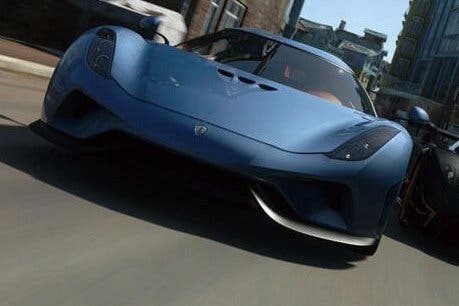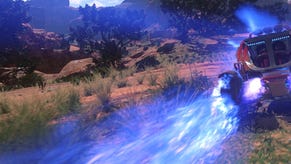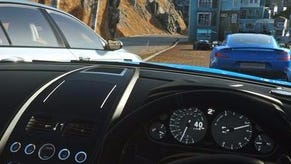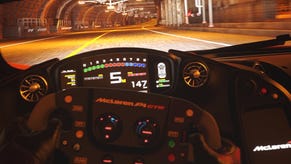Digital Foundry: Hands-on with DriveClub VR
The most immersive VR racing game yet?
On the face of it, a racing game on PlayStation VR shouldn't stand a chance against a high-powered PC coupled with Oculus Rift or HTC Vive, but after playing DriveClub VR at Gamescom this week, our viewpoint has shifted. Simply put - this is the most immersive racing game we've played in VR to date. From Assetto Corsa to Dirt Rally all the way to Project Cars, it's clear that the gorgeous visual design of the original DriveClub allows the game to stand above its more technically demanding peers. It's a classic case of software design triumphing over hardware limitations.
Sitting down in front of a force feedback wheel, we quickly adjusted the very comfortable PSVR unit and was immediately thrust into the cockpit of a beautiful Ferrari FF grand tourer. The first thing that sticks out is the quality of the cockpit itself - the materials and modelling here remain as detailed and impressive as the original release, but now with a genuine sense of place. Technically speaking, a game like Project Cars is certainly capable of displaying more detailed, technically demanding visuals, but one look around the cockpit is enough to demonstrate the gulf in technical artistry - there is simply an element of refinement and realism on display in DriveClub VR that does credit to the sheer quality of Evolution's original work.
Then we look out across the track - yes, the fidelity of the PSVR headset is certainly a step down from the Rift or Vive, but it quickly shoots to the back of your mind once you hit the accelerator. The weight of the car and the way this is communicated within the game gives it a feeling that genuinely took me by surprise. It feels supremely natural and really gives the impression that you're sitting in a car. I've spent a lot of time with some of the best PC VR racers and the virtual cockpit always felt 'off', a driving 'uncanny valley' of sorts, in a way that DriveClub does not.
This is assisted by the dramatic lighting and vastness of the world on display. The way the sunlight plays realistically off the windscreen as you barrel headlong into the sun cresting behind a distant mountain - simply beautiful. Even details such as the rear view and wing mirror reflections, which are now fully functional, stand out - there is a subtle depth to the effect as opposed to a flat two-dimensional image pasted onto the mirror surface as we see in titles like Project Cars.
Beyond that, while it's true that PSVR headset uses a lower resolution screen, it's sub-pixel arrangement helps to produce a very clean image while its optics minimise screen-door effect. In comparison, the Rift and Vive both use a pentile sub-pixel layout which has a negative impact on overall image quality. The difference manifests itself in the number of sub-pixels per pixel - an RGB matrix features three, while a pentile arrangement relies on just two. The higer resolution certainly results in a sharper image on the PC headsets, but PSVR compares favourably as a result of its RGB layout.
Of course, there are going to be sacrifices - after all, the original game operates at 30 frames per second while 60fps is the minimum required for a smooth VR experience. Thankfully, the visual identity of DriveClub is intact here, but some of its more ambitious visual features appear to be absent. The impressive cloud simulation model is eliminated and weather is nowhere to be seen, while the number of cars on the track is reduced from 12 to just eight. Trackside detail certainly takes a hit in the form of more aggressive LOD popping where flat billboard trees are converted to full 3D models in closer proximity to the player. The world isn't as richly detailed as before, but the resolution limits of PSVR at least help conceal that fact to a degree.
Then we have performance. Not unsurprisingly, the game operates at 60 frames per second with asynchronous time-warp essentially 'upscaling' this to a full 120 fps as it reaches the headset. The results feel remarkably smooth while playing but it is possible to spot its limitations by looking to the side - the fast scrolling of the scenery from right to left highlights gaps in the image that you'd expect to see when displaying at a half the refresh rate of your display. This clever solution is key to the PSVR experience as reaching a native 120 frames per second on a PlayStation 4 is a going to be a tall order, especially in a game like DriveClub with a CPU-heavy simulation.
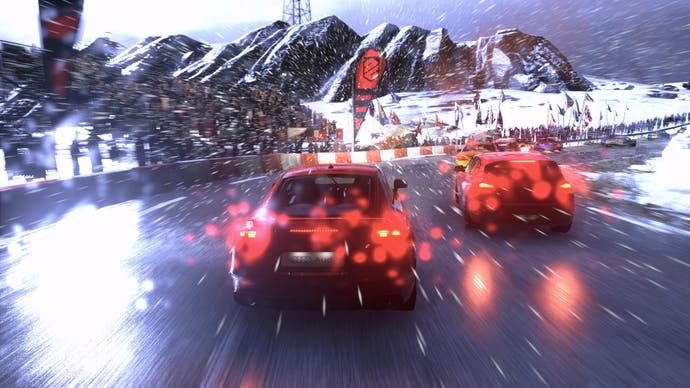
It's a tall order for the standard PS4, at least. The PlayStation Neo, Sony's upgraded version of the PS4, is set to be revealed this September and the bump in specs could theoretically have a significant impact on PSVR in general and DriveClub VR in particular. Native 120Hz may be off the table, but perhaps more of the visual features found in the original game may be retained for the PlayStation VR version.
Improved image quality is another potential option. While the headset is limited to 960x1080 per eye, increasing the internal rendering resolution could effectively super-sample the image resulting in less visible pixilation - a technique we use regularly in PC VR applications. The extra hardware shouldn't fundamentally change the experience but it could help improve the overall fidelity.
Ultimately, DriveClub VR demonstrates how effective virtual reality can be - even using less capable hardware. Smart software design and well executed technical artistry can definitely overcome these limitations, resulting in an experience that feels every bit as potent as the more powerful PC VR solutions. The devil is in the details and these details help make for an incredibly enjoyable experience. DriveClub VR is the real deal - virtual racing at its finest. We'll have more details on the game once it releases this fall alongside PlayStation VR.
